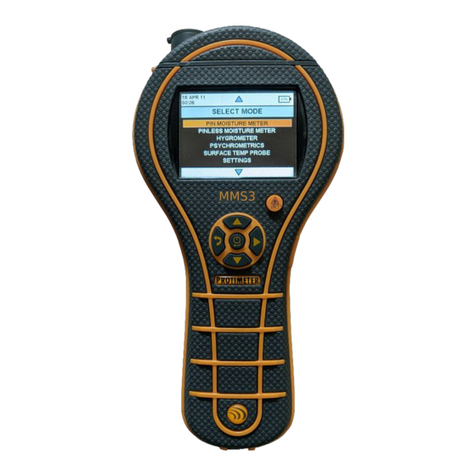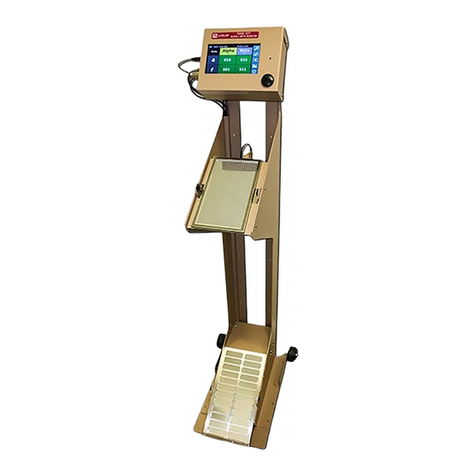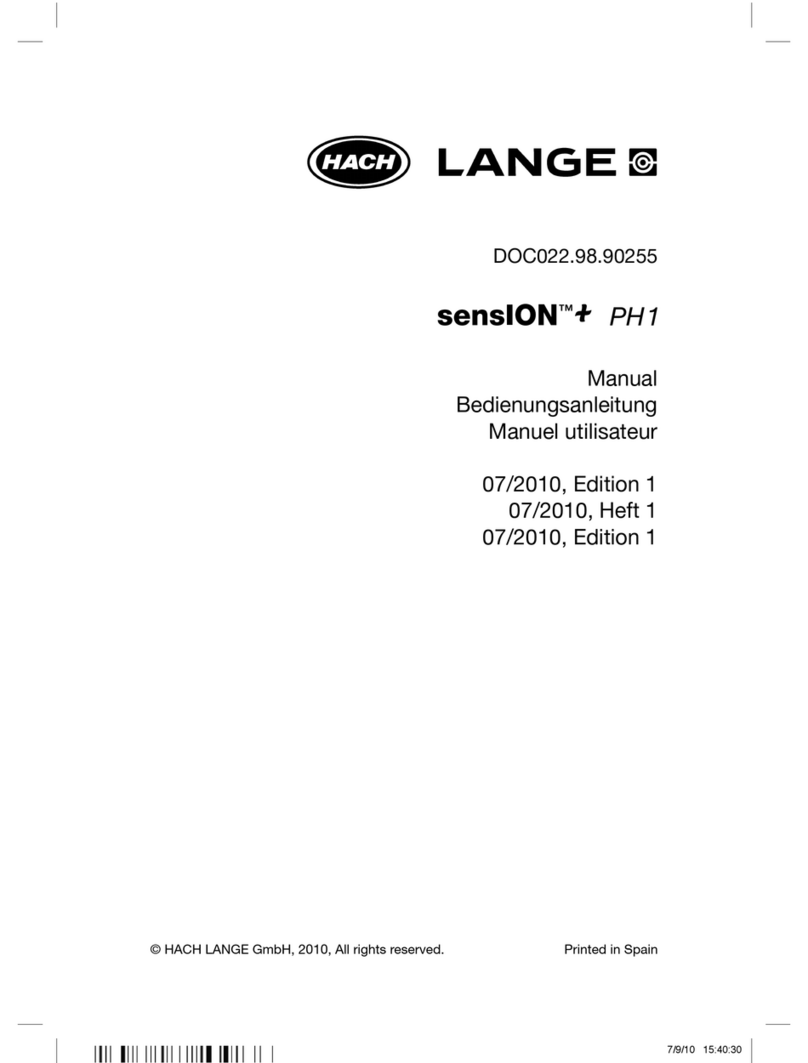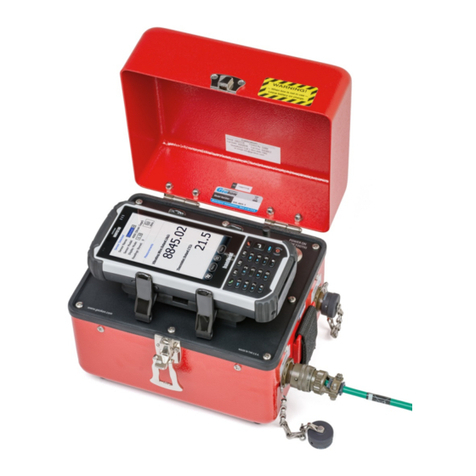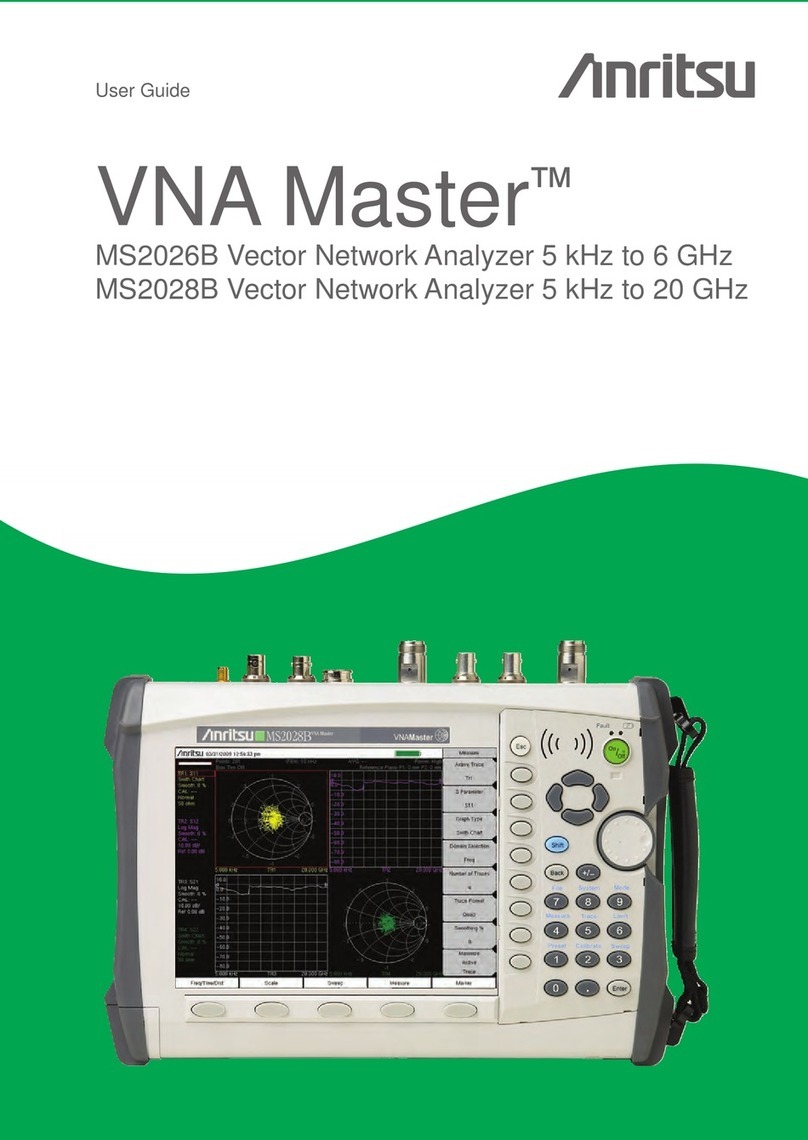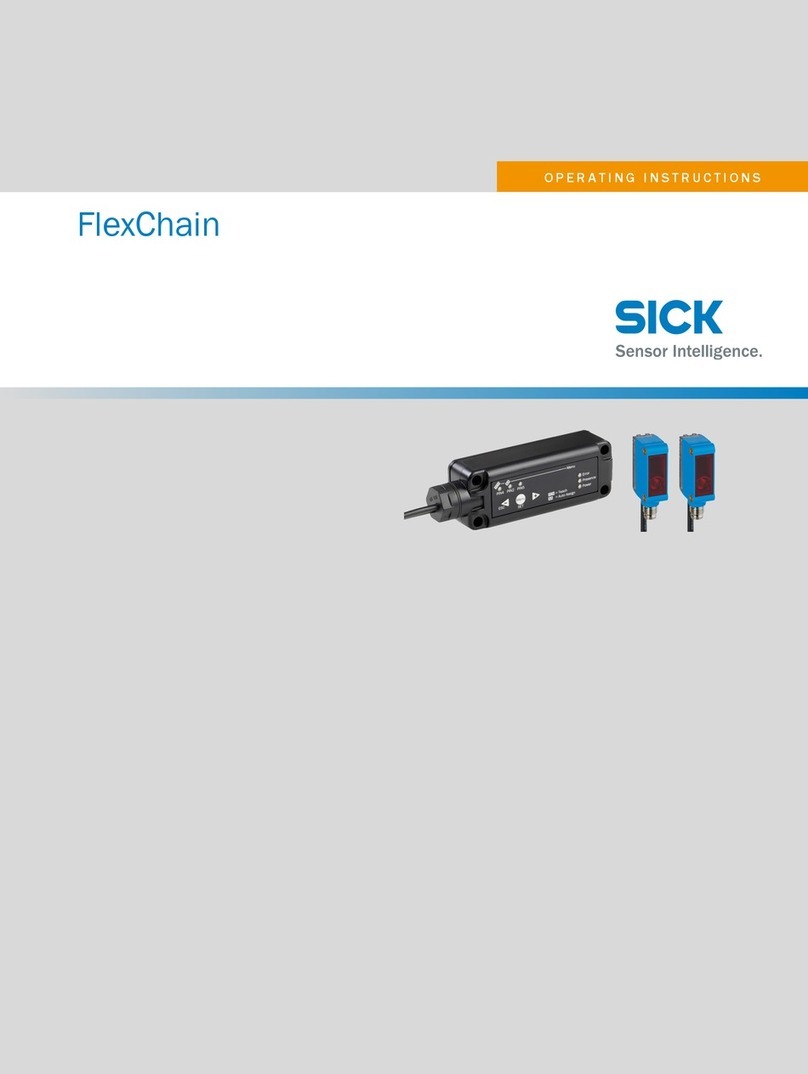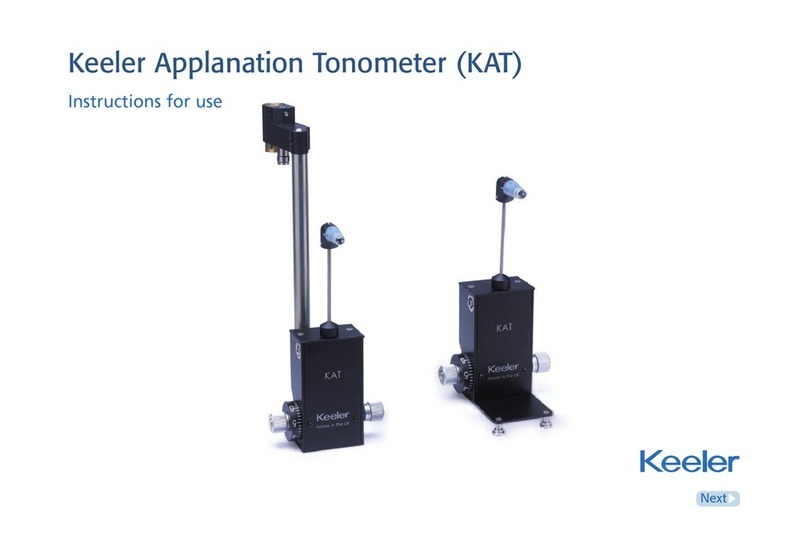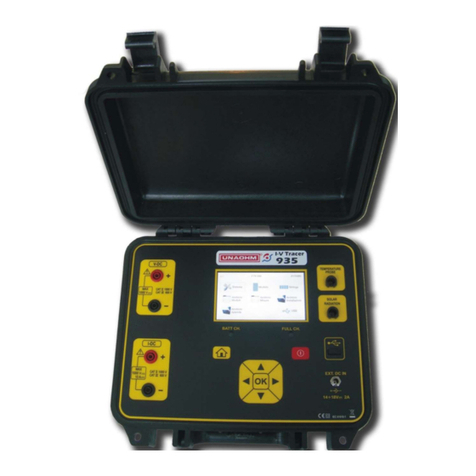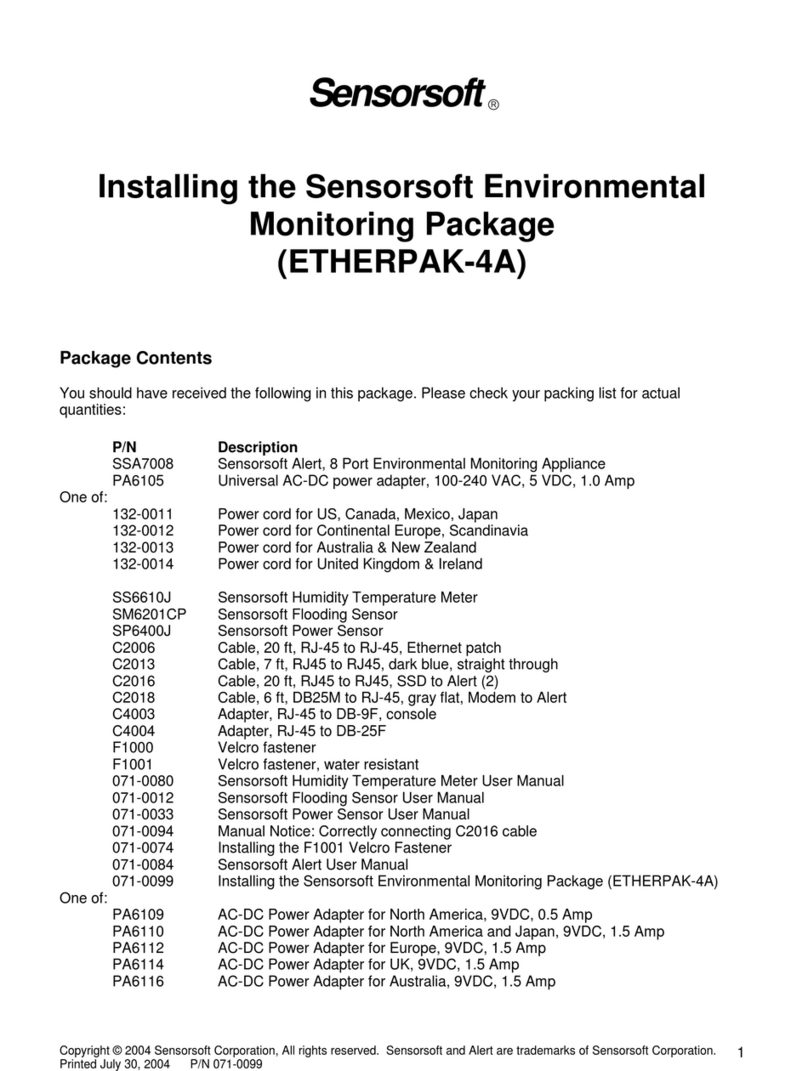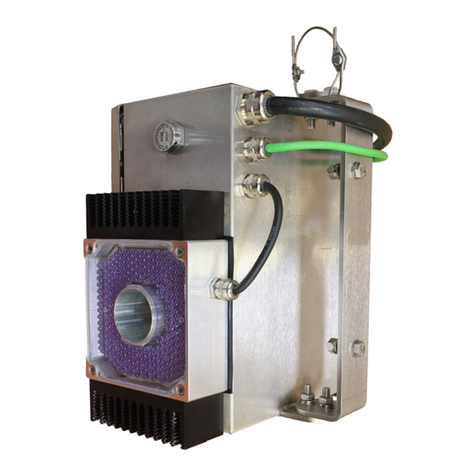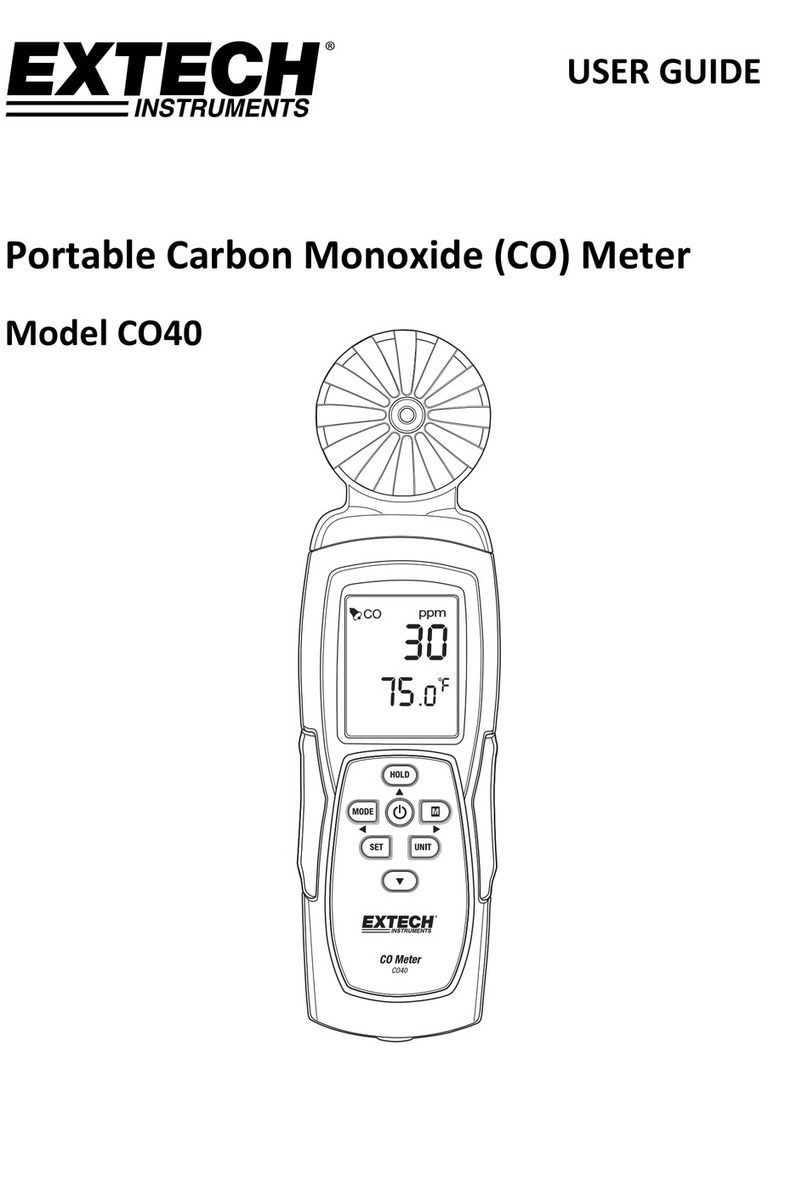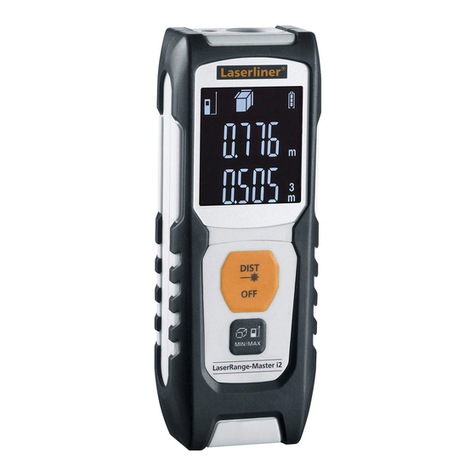Sperry instruments SPR-300 PLUS A User manual

05/06 From #174-1
OPERATINGINSTRUCTIONS
ACSNAP-AROUNDVOLT-OHM-AMMETER
MODELSPR-300PLUS&SPR-300PLUSA
1) FEATURES
・UL Listed
・New range finder symbols give quick and easy locations of all ranges.
・Three functions, nine ranges.
・Large optically clear window gives quick, easy distortion - free readings.
・One AA type battery AWS Part AWS B-1 included.
・Two fuses(one spare), both included. AWS Part #F-1.
・Volt, Ohm and Common terminals are on the front panel.
・Ohm scale on dial drum.
・
Industry standard safety shielded banana plugs and recessed input terminals included.
・Pointer lock device to freeze readings.
・1.5 Ampere range for low current equipment.
2) SPECIFICATIONS
Range : AC Current 6/20/60/200/600 Aac
AC Voltage 150/300/600 Vac
Resistance 0-2K/25 ohm mid scale
Accuracy : AC Current ±3% of full scale at 50-60Hz
±6% of full scale except 6A range at 400Hz
10% of full scale on 6A range at 400Hz
AC Voltage ±3% of full scale
Resistance ±3% of arc length
Withstand Voltage : 2,500 V AC for one minute between electrical circuit and
housing case or metal section of transformer jaws.
LIFETIME LIMITED WARRANTY
The attention to detail of this fine snap-around instrument is further enhanced by
the application of Sperry's unmatched service and concern for detail and
reliability.
These Sperry snap-arounds are internationally accepted by craftsman and
servicemen for their unmatched performance. All Sperry's snap-around
instruments are unconditionally warranted against defects in material and
workmanship under normal conditions of use and service; our obligations under
this warranty being limited to repairing or replacing, free of charge, at Sperry's
sole option, any such Sperry snap-around instrument that malfunctions under
normal operating conditions at rated use. 1
REPLACEMENT PROCEDURE
Securely wrap the instrument and its accessories in a box or mailing bag and
ship prepaid to the address below. Be sure to include your name and address, as
well as the name of the distributor, with a copy of your invoice from whom the
unit was purchased, clearly identifying the model number and date of purchase.
1 The warranty is not applicable if the instrument has been misused, abused,
subjected to loads in excess of specifications, has had unauthorized repair or has
been improperly assembled or used.
4.5) HOW TO USE POINTER LOCK & RANGE FINDER
SYMBOLS
(1) Slide the pointer lock button to the left. This allows easy readings in dimly lit
or crowded cable areas (Fig.8).
(2) For quick and easy identification the dial drum is marked with the symbols as
illustrated below (Fig.9).
5) BATTERY & FUSE REPLACEMENT
(1) Remove the screw on the back of the case for battery and fuse replacement
(Fig.10). Replace only with AWS fuse part F-1 or approved equal. 1/2A, 250V,
1/4"×1-1/4" Fast acting High Current interrupting style fuse.
CAUTION : For continued protection against fire, replace only with fuse of the
specified voltage current and rupture speed ratings.
(2) The battery and fuse are installed inside the case (Fig.11).
6) RETURN FOR REPAIR
Before returning your instrument for repair make sure the failure to operate is
not caused by:
1) Weak or de-energized battery
2) Fuse blown
3) Broken test leads
4) Pointer lock closed
If all of these conditions are checked to be fine and your instrument still does not
operate properly then send it bake freight prepaid to:
Sperry Instruments
2150 Joshua's Path, Suite 302
Hauppauge, NY 11788
Include all accessories and a note explaining what is wrong with the instrument.
Should you require an estimate please indicate ESTIMATE ONLY on your note. Be
certain to include your return address and day time phone number should we
need to contact you.
Ampere
range
to the
right.
Lower
range
to the
left.
Higher
range
to the
right.
Lower
range
to the
left.
Pointer
Lock
Fig.8 Fig.9
Fig.10 Fig.11
Back
Case
Screw
Spare
Fuse
Battery
Fuse
99 Washington Street
Melrose, MA 02176
Phone 781-665-1400
Toll Free 1-800-517-8431
Visit us at www.TestEquipmentDepot.com

(2) Set the range switch to the highest Vac range position.
(3) Connect the test leads to the circuit under test (Fig.4) and read the voltage
directly on the scale.
(4) When the reading is less than one half of the scale set the range switch to the
next lower range position. For maximum accuracy, select the lowest range
possible without overranging the meter.
4.4) RESISTANCE MEASUREMENTS
WARNING !
Attempting resistance measurements on live circuits can cause electrical
shock, damage to the instrument and damage to the equipment under
test. Resistance measurements must be made on de-energized (DEAD)
circuits only for maximum personal safety. The fuse protection installed
in this instrument will reduce the possibility of damage to the instrument
but not necessarily avoid all damage or shock hazard.
Never jump out the protective fuse. Replace the fuse with AWS Part #F-1 or approved
equal. Only use fuses that are quick acting and have high current interrupting capacities.
(1) Teat the circuit to make sure it is de-energized. Refer to section 4.3 on how
to test for voltage.
(2) Set the range switch to the ohm range position. Insert the red test lead into
the “OHM” terminal and black test lead into the “COM” terminal (Fig.5).
(3) With the test leads open set the pointer over the “∞”(infinity)mark at the left
end of the ohm scale, using the zero adjust screw.
(4) With the test leads shorted set the pointer over the “0”mark at the right end
of the ohm scale, using the ohm zero adjust knob (Fig.6).
Note : When this adjustment does not bring the pointer over the “0”mark replace the
battery.
(5) Connect the test leads to the circuit under test (Fig.7) and read the resistance
directly on the scale.
Insulation Protection : 10MΩ min. at 1000 V between electrical circuit and
housing or metal section of transformer jaws.
Overload Protection : AWS Part #F-1,0.5A, 250V, 1/4"×1-1/4" fuse and
diode
Frequency Response : 50-400Hz
Conductor Size : Approx. 1.2"(30mm)
Dimensions : 8.7"(L)×3.3"(W)×1.6"(D)
220mm (L) ×83mm (W) ×40mm (D)
Weight : Approx. 13.8 oz. (390g)battery included
Power Source : One 1.5V AA size battery, AWS Part #B-1
Fuse : 1/4"×1-1/4", .5A, 250V FF AWS Part #F-1
Temperature : 5℃ to 40℃ Max RH 80% to 31℃, decreasing
linearly to 50% RH at 40℃
Cleaning : Wipe with a clean dry cloth.
Accessories : (included)
Test Leads Model TL-52 one alligator, one with prod
.
Banana Plugs are shrouded, Battery B-1, AA type 1.5V.
Two 0.5/250V Fuses F-1 (spare fuse included),
durable Case C-53.
(optional) Energizer Model E-1, AG-940, TL-5, TL-5-A1, TL6,
TL6-A1, TL-39, TL-42, TL-44, TL-48, TL-49 and
C-53A Carrying Case.
Instrument complies with insulation category (Overvoltage Category ll). Pollution
Degree 2 in accordance with IEC-664. Indoor use.
If the equipment is used in a manner not specified, the protection provided by
the equipment may be impaired.
3) SAFETY PRECAUTIONS
The following safety precautions must be observed to insure maximum personal
safety during the operation, service and repair of this meter :
1. Read these operating instructions thoroughly and completely before
operating your meter. Pay particular attention to WARNINGS which will
inform you of potentially dangerous procedures. The instruction in these
warnings must be followed.
2. Always inspect your meter, test leads and accessories for any sign of
damage or abnormality before every use. If any abnormal conditions exist
(eg. broken test leads, cracked cases, etc.), do not attempt to take any
measurements. Refer to Return for Repair section.
3.
Do not expose the instrument to direct sunlight, extreme temperature or moisture.
4. Never ground yourself when taking electrical measurements. Do not touch
exposed metal pipes, outlets, fixtures, etc., which might be at ground
potential. Keep your body isolated from ground by using dry clothing, rubber
shoes, rubber mats, or any approved insulating material.
5. To avoid electric shock use CAUTION when working with Voltages above 40
Vdc or 20 Vac. Such voltages pose a shock hazard.
6.
Never exceed the maximum allowable input value of any function when taking
a measurement. Refer to the specifications on page 1 for maximum inputs
.
7. Never touch exposed wiring, connections or any live circuit when attempting
to take measurements.
8. Do not attempt to operate this instrument in an explosive atmosphere (i. e.
in the presence of flammable gases or fumes, vapor or dust).
9. When testing for the presence of voltage, make sure the voltage function is
operating properly by reading a known voltage in that function before
assuming that a zero reading indicates a no-voltage condition. Always test
your meter before and after taking measurements on a known live circuit.
10. Calibration and repair of any instrument should only be performed by
qualified and trained service technicians.
11. Do not attempt calibration or service unless trained and another person,
capable of rendering first-aid and resuscitation, is present.
12. Do not install substitute parts or perform any unauthorized modification of
the instrument. Return the instrument to Sperry Instruments, Inc. for service
and repair to insure that safety features are maintained.
4) OPERATION
BEFORE PROCEEDING WITH ANY MEASUREMENT, READ THE SAFETY
PRECAUTIONS SECTION 3.
4.1) PREPARATION
(1) To ensure greatest accuracy, the pointer should be set exactly to the zero
position by rotating the zero adjust screw (Fig 1).
(2) Make certain that the pointer lock button is in the open position (Fig. 1).
4.2) AC CURRENT MEASUREMENTS
WARNING !
This instrument is designed to take current readings on circuits with a
maximum voltage above ground not exceeding 600 Vac. Using it on
circuits above 600 Vac poses a shock hazard to the user.
(1) Set the range switch to the highest 150 Aac range position.
(2)
Press the trigger to open the transformer jaws and clamp onto one conductor
only (Fig. 2). Read the current directly on the scale. It is recommended that the
conductor be placed at the center of the closed jaws for maximum accuracy.
(3) When the reading is less than one third of the scale set the range switch to
the next lower range position. For maximum accuracy, select the lowest
range possible without overranging the meter.
4.3) AC VOLTAGE MEASUREMENTS
WARNING !
This instrument is designed to take voltage readings up to a maximum
of 600 Vac. The “COM”terminal voltage should not exceed 500 V
measured to ground potential. Do not exceed these maximums.
(1) Insert the red test lead into the “VOLT”terminal of the instrument and the
black test lead into the “COM” terminal (Fig.3).
Pointer Lock
Zero Adjust
Wrong Correct
Volt
Com
Fig.1
Fig.2
Fig.3
Fig.4
Fig.5
Fig.6 Fig.7
Com
Ohm
Ohm Zero
Adj. Knob
This manual suits for next models
1
Table of contents
Other Sperry instruments Measuring Instrument manuals
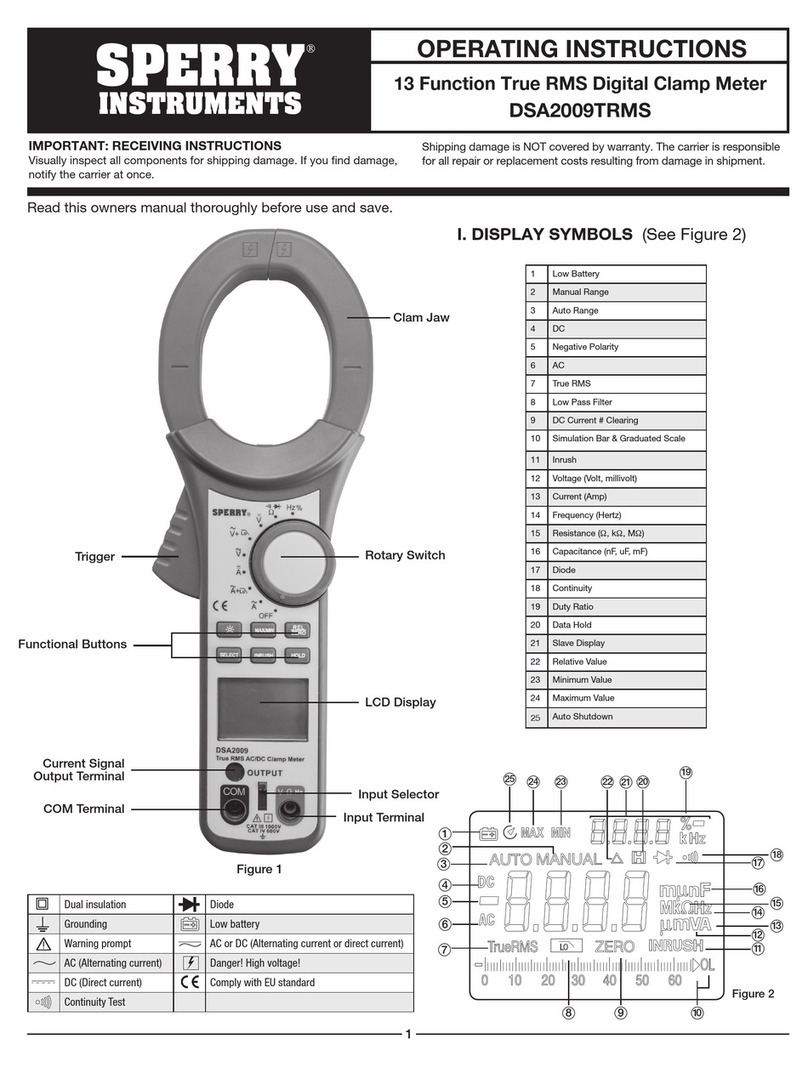
Sperry instruments
Sperry instruments DSA2009TRMS User manual
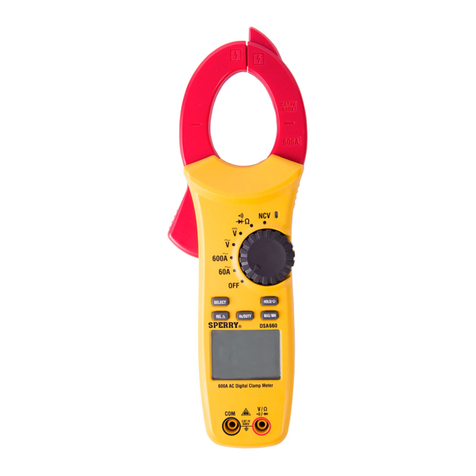
Sperry instruments
Sperry instruments DSA660 User manual
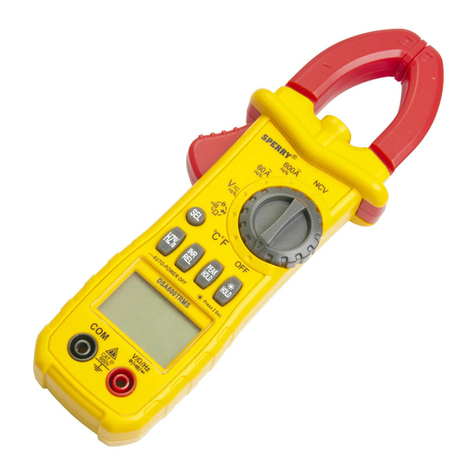
Sperry instruments
Sperry instruments DSA600TRMS User manual
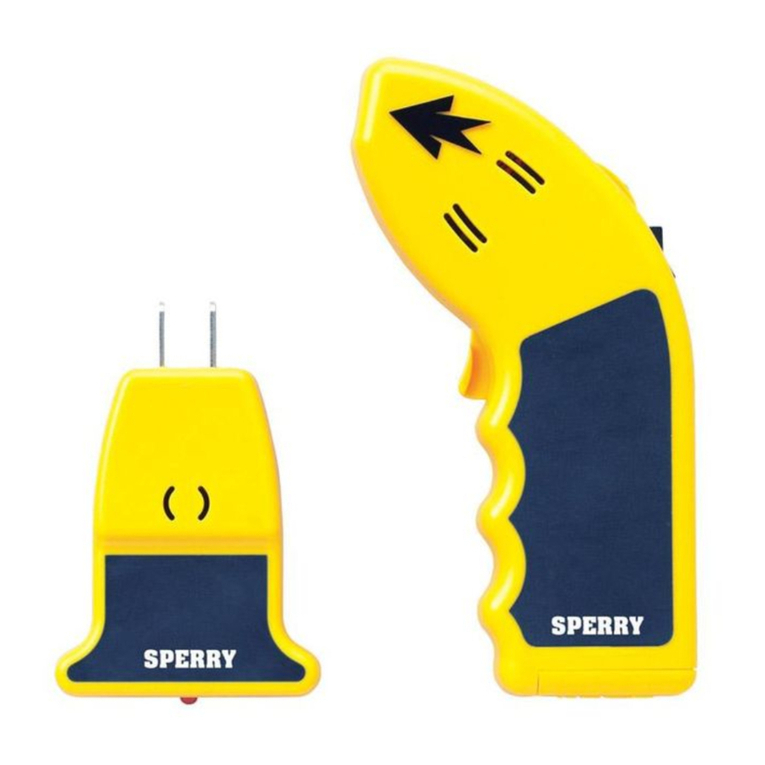
Sperry instruments
Sperry instruments CS-550A User manual
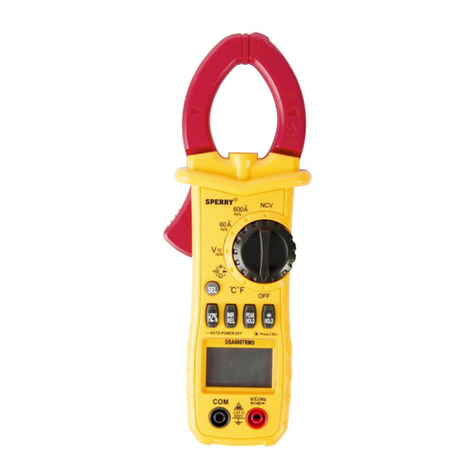
Sperry instruments
Sperry instruments DSA600TRMSR User manual
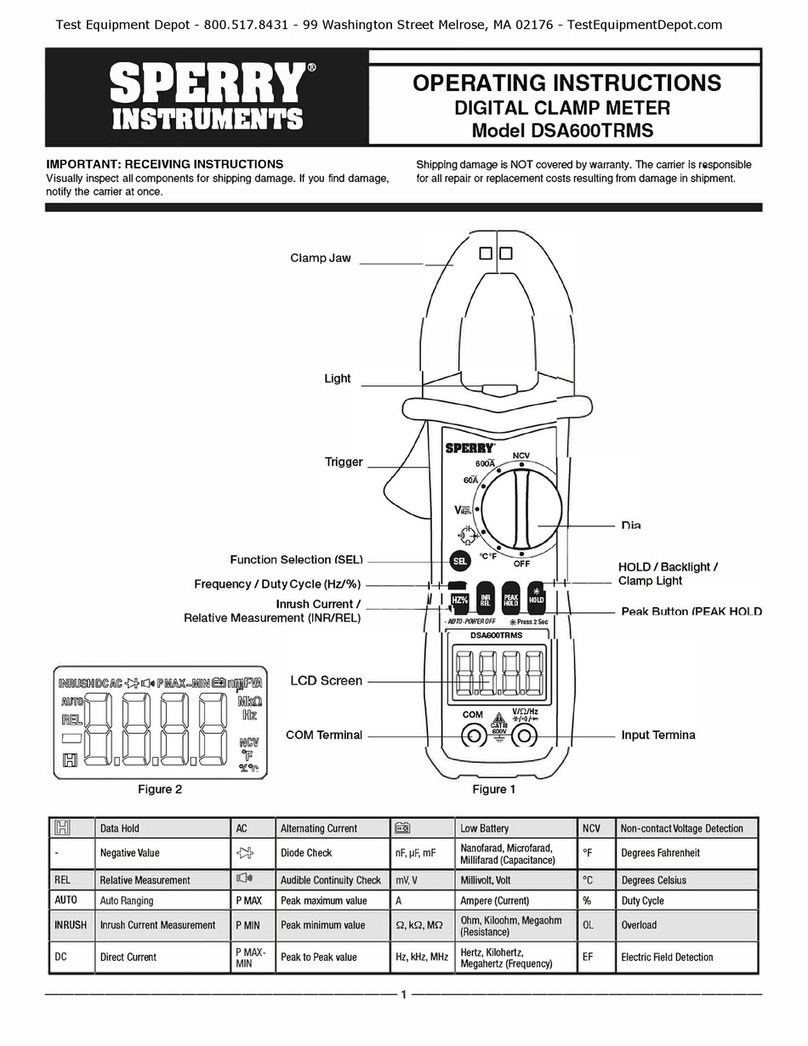
Sperry instruments
Sperry instruments DSAG00TRMS User manual

Sperry instruments
Sperry instruments DSA200AOC User manual
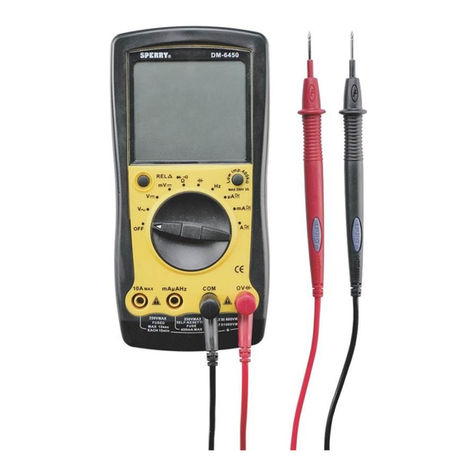
Sperry instruments
Sperry instruments DM6450 User manual
